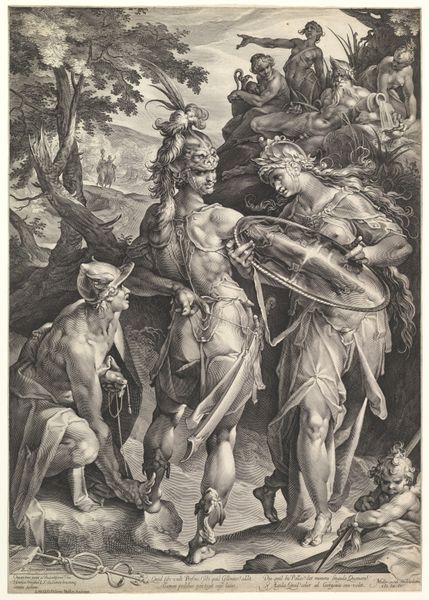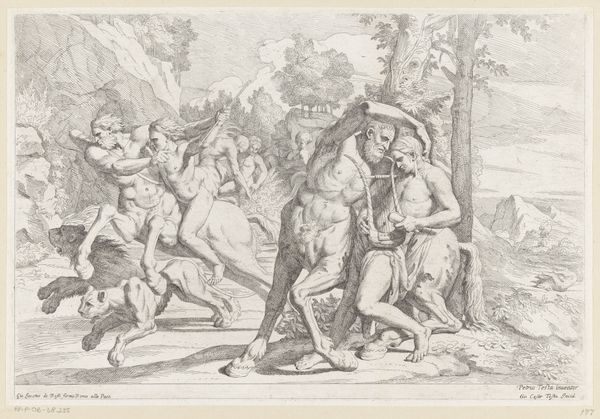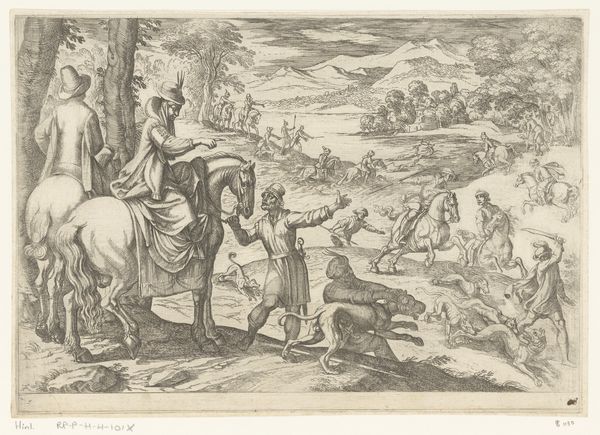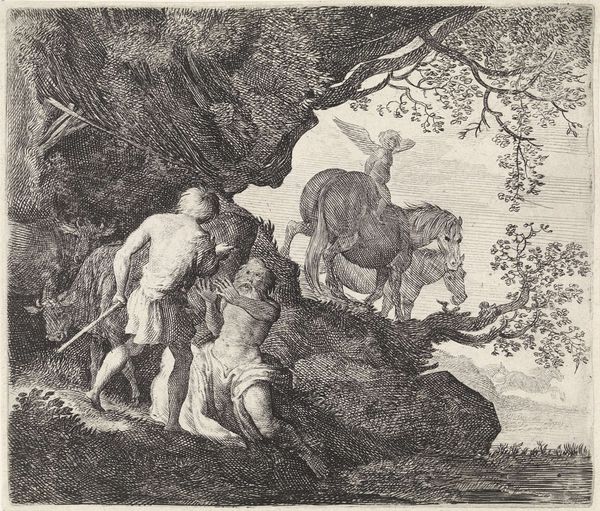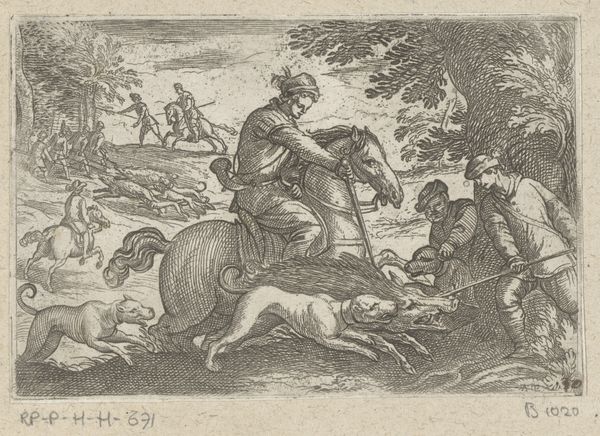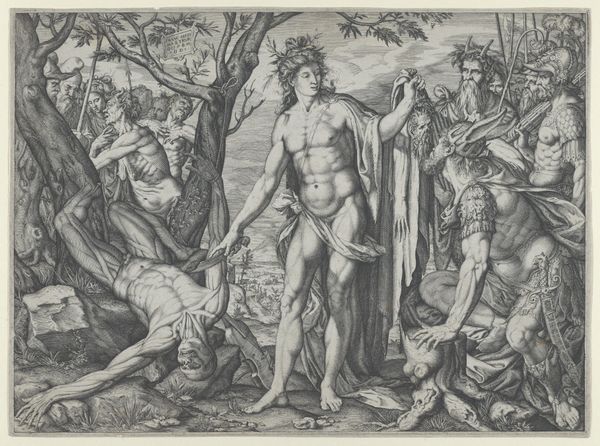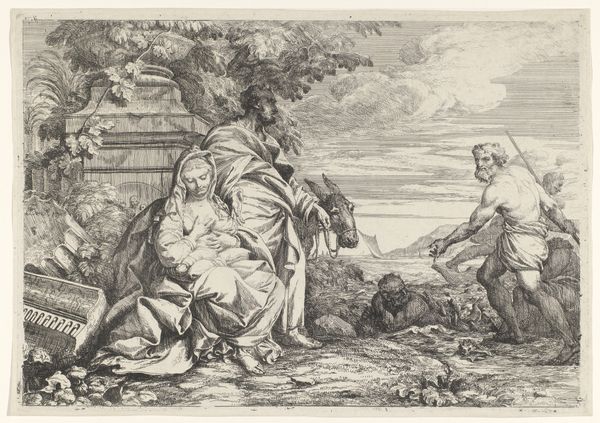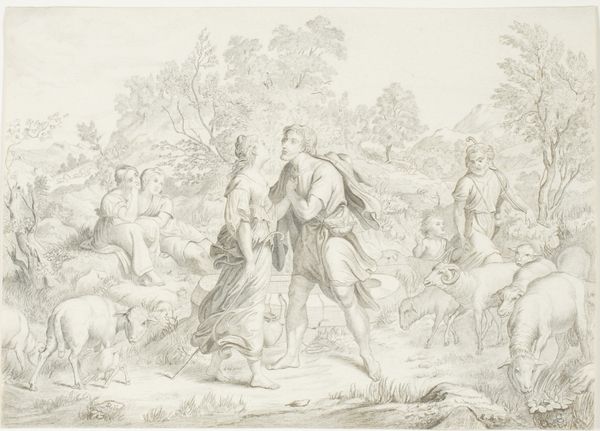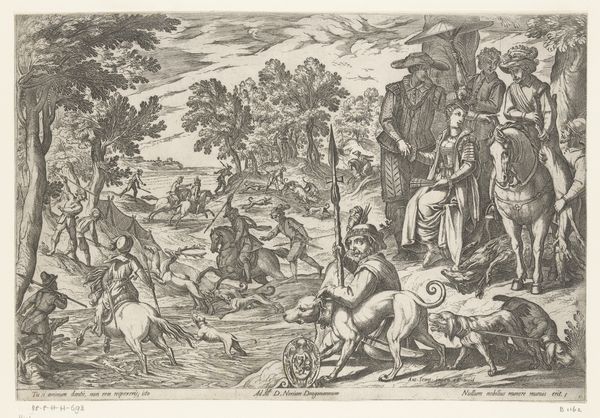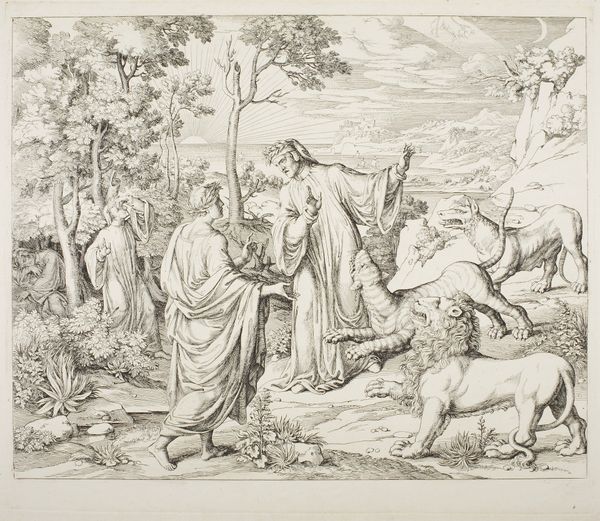
drawing, charcoal
#
portrait
#
drawing
#
landscape
#
charcoal drawing
#
figuration
#
romanticism
#
charcoal
#
history-painting
#
charcoal
Dimensions: overall: 27.5 x 45 cm (10 13/16 x 17 11/16 in.)
Copyright: National Gallery of Art: CC0 1.0
Editor: This charcoal drawing from 1837, entitled *The Count of Habsburg*, is by Philipp von Foltz. I’m really struck by its almost cinematic feel. It’s like a freeze-frame from a historical drama, but rendered in such delicate greys. What can you tell me about its place in art history? Curator: Well, given the period and subject matter, this drawing resonates deeply with the Romantic movement’s fascination with history and the medieval past, wouldn’t you agree? Consider how national narratives were being shaped and visually represented through art at this time. Do you notice anything in the composition that might support such readings? Editor: I guess the noble figures on horseback evoke a specific kind of historical power. The whole scene feels posed, staged, perhaps? Curator: Precisely! The theatricality is quite deliberate. Consider the role paintings and drawings played in constructing a sense of national identity. This image participates in a broader visual culture that idealizes and romanticizes certain figures and events. The very act of choosing this subject matter, Habsburg nobility, is a political statement of sorts, no? Editor: It is when you put it that way, a means of glorifying a national narrative. So this isn't just history, it's a certain reading of history, isn't it? How conscious do you think Foltz would have been of this public role? Curator: Extremely conscious! Artists, like Foltz, were often commissioned specifically to create works that would bolster certain political agendas or celebrate specific historical moments. We need to always be alert to the ways in which visual culture is used to shape public opinion and reinforce power structures. Editor: I never thought of it that way. Seeing the art, and knowing it’s not just what happened but the telling of a story to a specific end is interesting. Curator: Exactly. So, always consider the socio-political forces at play. Then ask yourself: Whose story is being told and why?
Comments
No comments
Be the first to comment and join the conversation on the ultimate creative platform.
